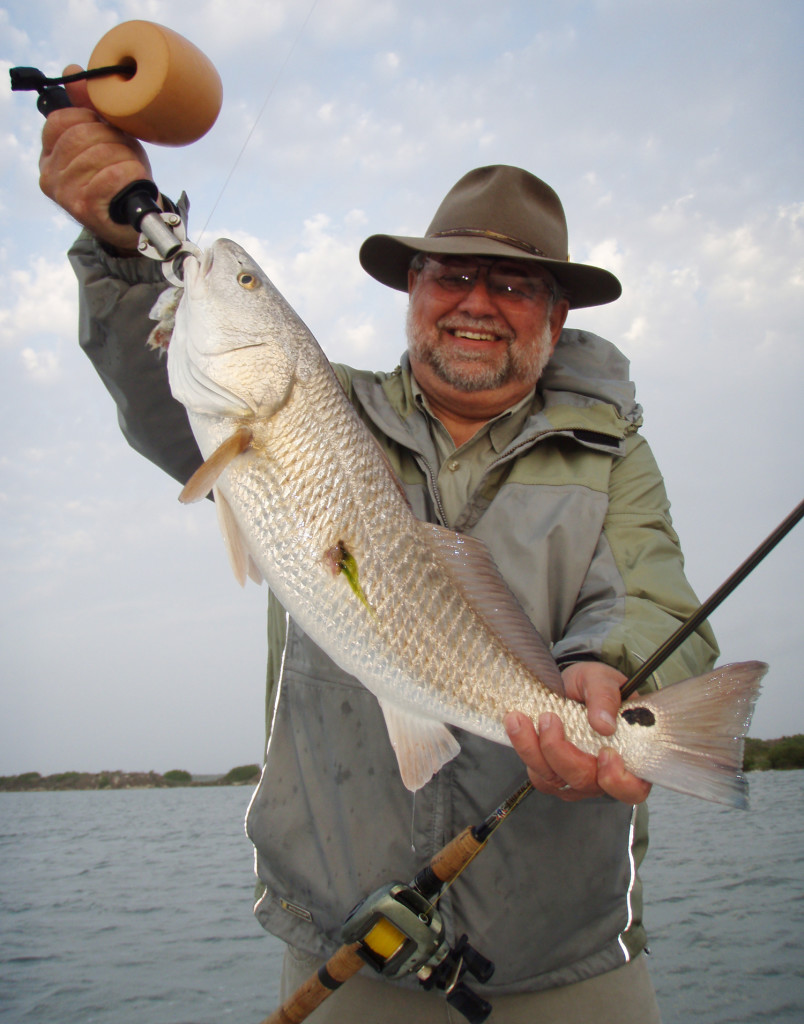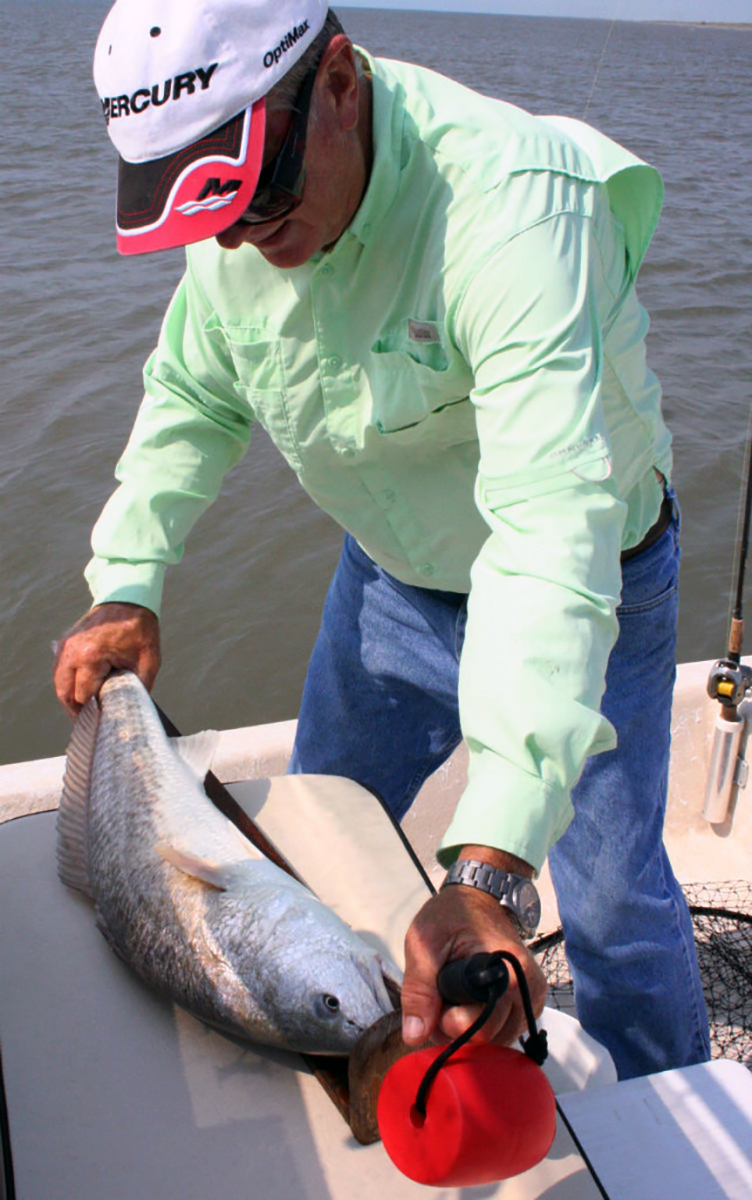Texas has its own running of the bulls each fall and the most savvy of anglers know that when it’s time to lock horns with a beast, you need look no farther than manmade passes that intersect the Gulf of Mexico for a stampede of fishing action.
October is big redfish time in the Lone Star State, with the annual fall migration of big bull reds underway as those fish head from our multitude of bay systems into the Gulf to spawn.
To first understand why this phenomenon occurs, you simply need to look at the life cycle of this most sought-after species across the Gulf and on the Atlantic Ocean side of the East Coast in Florida and the Carolinas. Juvenile red drum spend their first few years in bays and other shallower areas, places biologists dub “surf zones,” which are really just tidal areas near passes and jetties. When the fish reach maturity, they move out into the Gulf to breed and spend the rest of their days. Spawning season typically runs from mid-August to mid-October and the eggs laid near Gulf shores and passes ride the current into bay systems, turning into larvae that grow up in the shallows, using sea grass to hide from larger predators while they cruise sandy bottoms.
Young redfish gobble up shrimp and small crabs and as they quickly grow — reaching a foot in length within their first year and hitting legal size by year three — their diet expands to include full-size crabs and larger fish, including mullet and croaker.

Guides and biologists with plenty of fishing experience note that some of the best redfish breeding activity coincides with high tides that help spread eggs back into marshy bayou and estuary areas rich with nutrients, helping to set the stage for good fishing in subsequent years. Those higher tides also coincide with storms and hurricanes, which though destructive, can actually help the Gulf ecosystem in this biological regard.
Once you know the life cycle of these critters and what makes them tick, it’s easy to see why so many anglers look forward to the fall redfish run when the fish are in full force heading toward the Gulf.
It’s easy to discern if the fish are in and there’s a full-fledged migration occurring, notably by the lines of anglers set up along pass areas with a full complement of surf rods stowed in stakeout PVC rod holders.
While it’s not uncommon to see fish rolling near the surface or cruising just below the top, this fall redfish hunt isn’t about sight fishing, which typically involves using light tackle and fly rods while stalking shallow grass flats, hoping a fish will give away its position by “tailing” or sticking its back above the surface.
This pursuit is geared mostly toward playing the percentages, which for most anglers means putting out multiple rods and waiting for the fish to oblige. When it comes to discussing tackle techniques for bull reds, the variety of means and methods is actually astonishing, with lots of different ways to lure in, catch and land these brutish specimens. There’s really no wrong way to fish for big reds, but if you plan to hook up with a fish in the double-digit pound range, you definitely will want some backbone in your rod.
Many anglers who target bull reds in the surf or from piers and jetties prefer longer, stiffer surf-style rods equipped with stout reels capable of holding a few hundred yards of heavier test line (30- to 40-pound-test range) as well as having a good drag setup that can help play out big fish.
Texas inshore saltwater fishing outstanding during fall, winter months
As far as bait is concerned, the best characteristic of the redfish — it is an equal-opportunity gourmand — plays right into the hands of anglers, with multiple options for success using natural baits or artificial lures. Crabs, shrimp and mullet are usually easy to acquire this time of year and can be fished in multiple ways to bring in hungry fish. Shrimp and mullet, and other baitfish including piggy perch and croakers, can be free-lined with small weights to help with their natural swimming presentation while live crabs can be hooked through one of their rear legs and allowed to flutter in the current. Fresh cut bait and fresh cracked crabs also can work, too. These natural baits also work when fished along the bottom in channels and jetty areas, using a slip-sinker setup to keep the bait down below.
If artificials are your particular method of choice, there are plenty of options, too. If you’re going to be casting these for any period of time, you’ll want to trade in the heavier surf stick for a medium-action rod that will allow you to throw farther and do a good job of allowing a decent hook-set. A big redfish will hook itself plenty solid most of the time, especially if you’re using circle hooks that purchase well into the side of the fish’s tough mouth.
The artificial tackle box for redfish really only needs a handful of time-tested fish-catchers. The No. 1 artificial in your arsenal should be a heavy gold spoon. I’ve caught big reds on other colors, including silver and multi-colored fish pattern imitations, but the gold flavor just seems to taste better to the fish. These half-ounce to three-quarter-ounce lures are dynamite for bull reds in the surf this time of year and you can cast them a country mile. Unlike fishing shallow grass flats in the spring and summer with lighter, weedless versions, you can tote along a treble-hooked version of the spoon if floating grass isn’t an issue.
Another go-to artificial are plugs imitating mullet and other baitfish that can be fished as topwaters or other versions that are shallow divers. Should you be lucky enough to find a topwater bite, you may never see anything like it again, and big bull reds busting on top is a sight to behold.
Other artificials that work under a variety of conditions are paddletail plastics and shrimp imitations that can be worked under a popping cork, bounced on the bottom or simply retrieved slowly. Berkley Gulp! is an outstanding choice, with the Ripple Mullet, Shrimp and Mantis Shrimp varieties all being good bull red fodder.
Lure choices that get more of a reputation as lunker largemouth bass catchers that actually work well in saltwater are spinner baits and buzzbaits, which are sold in many tackle stores along the coast with stainless and non-corrosive parts. Another bass bait that actually can be good for bull reds are frog imitations, especially the soft plastic lure with fluttering legs. There’s no reason why a frog would naturally ever make it willingly into a redfish environment but somewhere along the way one must have because they’ll hit them hard.
Texas fishing calendar: In September head to Aransas Bay for flounder
Saltwater fly fishing is another craze that has taken root from Texas to Florida, and for good reason. When redfish are tailing on the flats and are cruising super skinny, placing a popper or streamer quietly in its path may be the only way to catch them. It’s also just damn fun when it works.
If you find hungry redfish and want to try the long stick, make sure it also has some backbone, typically in the 8- or 9-weight range outfitted with an adequate corresponding floating line. Depending on how shy the fish are, and if you’re angling beach and pass areas the bite typically won’t be affected, you may want to alter your leader and tippet length and strength.
A good starting point for a leader is about 9 feet and companies like Rio manufacture tapered leaders specifically for saltwater applications. They even have a redfish on the box!
For tippet, plan on the 10- to 15-pound-range, but if the fish aren’t line shy, you definitely will welcome the larger number.
If you haven’t hooked a redfish on the fly, add it to your outdoor bucket list. It’s nothing short of amazing, even if it’s a fish on the smaller end of the slot.
The daily bag on redfish in Texas is three fish in a slot limit of 20 to 28 inches, though you may keep one over 28 as long as it’s affixed with the oversize red drum tag from your saltwater fishing license.
With healthy and even thriving populations of redfish from Sabine Pass to South Padre Island, the running of the bulls is closer than most Texans may realize, no matter where you call home. Now that hunting season is underway, there’s also no better time to head down to the coast and enjoy some of the best fishing our state offers all year long.


















